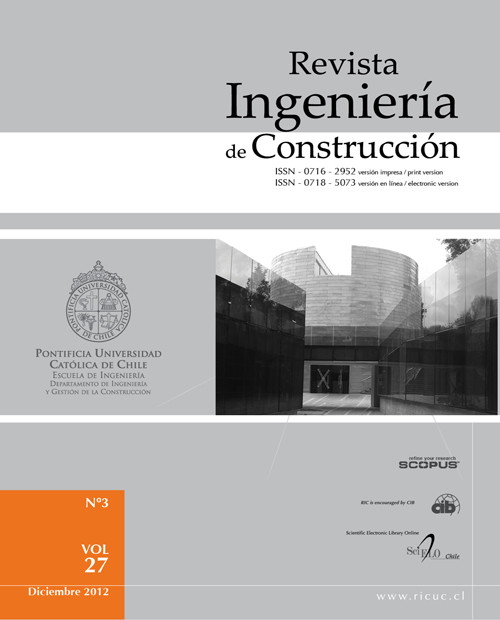Productive use of sludge from a drinking water treatment plant for manufacturing ceramic bricks
DOI:
https://doi.org/10.4067/S0718-50732012000300003Keywords:
Aluminous sludge, ceramic bricks, compression resistance, dewatering sludge, water absorptionAbstract
One of the most important problems for water treatment systems based on chemical coagulation process is the sludge generation, whose final disposition is made predominantly onto water, affecting their quality and potential uses. The productive use of this sludges represents a way to relieve some of the problems of solid waste management that helps in the recovery of natural resources and reduces the environmental pollution. This study allowed the evaluation of the use of aluminous sludge for the manufacture of ceramic bricks. The results show that it is feasible to use these sludges in partial replacement of one of the constituent materials of brick, in this case the sand in percentages above 10%; however, to avoid compromising the compression resistance it should be optimized the previous sludge dewatering to increase the potential waste-to-energy scheme. The brick obtained has appropriate characteristics for non-structural use.


